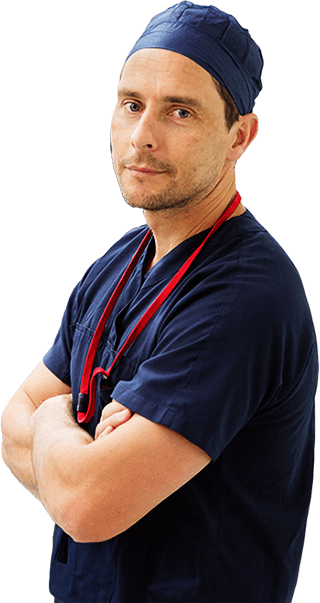ACL Rehabilitation: Overview
Historically, the quoted time frame for return to pivoting, twisting and high-level sport is 9-12 months following reconstructive surgery. However, I support current evidence suggesting a GOAL-based rehabilitation program is superior to TIME-based rehabilitation. Despite this, we know that putting too much strain on the ACL graft too early in the recovery phase is associated with repeated injury. As a result, a balance between these two methods will achieve optimal results.
ACL Rehabilitation: Pre-operative Rehabilitation (‘Prehab’)
Pre-operative rehabilitation is essential to maximise your results following Anterior Cruciate Ligament (ACL) Reconstruction surgery. Most patients following their initial ACL injury will have a significant amount of pain or swelling in their knee, and a lot of patients will find it difficult to put their full weight through their knee in the early period after injury.
Prehab guided by your treating physiotherapist can provide the optimal advice regarding the early recovery from your ACL injury. Whether you choose to undergo reconstructive surgery or not, physiotherapy-led prehab is useful in preparing your knee for the next stage of your treatment.
ACL Rehabilitation: PRICE
Remember the following principles
P – Protection is meant to prevent further injury. Using crutches in the days following your ACL injury will help rest the knee and prevent it from collapsing on you while you recover. Once the diagnosis is made, and as long as there aren’t other injuries in the knee that require you to use crutches, you can start to progressively increase the amount of weight you put through your knee.
R – Rest is important to allow the knee to recover from the initial trauma of the episode. Once you’ve started to recover from the initial injury, you will be able to resume your regular day-to-day activities and commence light exercises such as stationary cycling. It is a good idea to regain the range of motion in your knee as soon as feasible, focusing on getting the knee straight again and bending beyond 90 degrees.
I – Ice. This is crucial in reducing the swelling in your knee and enabling you to regain your range of motion. One of the simplest ways of doing this is to use a bag of crushed ice (ice pack or frozen peas), wrapped over the knee with a bandage for 15-20 minutes every 1-2 hours.
C – Compression is the use of a compression wrap to minimise swelling and will also provide gentle support to the knee. Tubigrip is readily available from your local pharmacy, or alternatively, a compression bandage can be wrapped around the knee to achieve a similar result.
E – Elevation is key in reducing swelling in the recently injured knee. It is important to raise the knee above the rest of the body. In practice, this means laying down on a bed or couch and having the knee propped up on pillows so it sits above the rest of the body. Remember, the knee has to be above the level of your heart to achieve an appropriate amount of elevation.
ACL Rehabilitation: Post-Operative Rehabilitation
I believe a multi-disciplinary approach to your rehabilitation will optimise your chances of a successful recovery from ACL Reconstructive surgery. In general, this means input from myself, your physiotherapist, GP and most importantly you! I believe in an individualised treatment protocol for my patients, to identify their individual goals and then develop a plan to achieve them. Each treatment regime is patient-specific, but in general the stages of post-operative recovery include:
- Acute post-operative recovery
- Muscular control and co-ordination
- Proprioception and agility
- Sport specific training
- Safe return to play
Phase 1 (0-2 weeks post op) goals:
- Get comfortable – pain relief as necessary
- Achieve wound healing
- Restore range of motion – aim to achieve near full extension
- Establish muscular control
- Wean crutches
Phase 2 goals:
- Re-establish normal walking patterns
- Reduce post-operative swelling
- Restore range of motion – full extension with flexion above 90 degrees
- Develop muscular control and endurance
- Work on core strength
Phase 3 goals:
- Improve balance and proprioception (joint position sense)
- Continue to work on muscular strength and introduce power
- Develop confidence
- Progress to gentle running, and then gradual change of direction
- Increase stamina
- Improve core strength
Phase 4 goals:
- Improve confidence
- Sport specific training and drills, commencing with low-risk activities and progressing under the guidance of your therapist / strength and conditioning team.
- Work on landing, jumping and change of direction mechanics
- Gradual introduction to training in a team environment
- Redevelop stamina and reduce muscular fatigue
Phase 5
- Higher level sport specific skills
- Gradual re-introduction to full training
- Commence game simulation
- Prepare for full return to sport
- Pass return to sport guidelines
Weight bearing
WBAT Crutches for support and comfort
Bracing
Straight splint for comfort only, cease when achieved full extension and able to weight bear
ROM goals
Achieve full extension, but not hyper-extension
Physical therapy
- Rest
- Ice
- Compression
- Elevation ROM exercises
- Static quads
Weight bearing
WBAT Re-establish normal walking cycle
Bracing
No brace
ROM goals
- 0-90 degrees
- avoid hyper-extension
Physical therapy
- Rest
- Ice
- Compression
- Elevation ROM exercises
- Closed chain exercises
- Light stationary cycling
- Hydrotherapy (use of pool buoy)
- Balance exercises
- Core Strength / gluteal strength
Weight bearing
WBAT
Bracing
No brace
ROM goals
Progress to full range of movement
Physical therapy
- Ice
- levation as needed
- ROM exercises
- Closed chain exercises
- Stationary cycling
- elliptical trainer
- Light weights training
- Core strength / gluteal strength
Weight bearing
WBAT
Bracing
No brace (can consider using elastic proprioceptive brace)
ROM goals
Full range of movement
Physical therapy
- Ice
- elevation as needed
- ROM exercises
- Open chain kinetic exercises
- Commence gentle, straight line running and later progression to light change of direction / ‘S’ running
- Proprioceptive control
- Agility and plyometrics
Weight bearing
WBAT
Bracing
No brace (can consider using elastic proprioceptive brace)
ROM goals
Full range of movement
Physical therapy
- Ice
- elevation as needed
- Open chain kinetic exercises
- Muscular strengthening
- More dynamic exercise, change of direction
- Agility and plyometrics
- Return to team training in a co-ordinated fashion
ACL Rehabilitation: Return to Sport
Returning to your chosen sport is a significant milestone for any active individual no matter what level. I place a big emphasis on the safe return to sport, to reduce the risk of re-injury. In general, we tend to go slightly slower with our youngest patients (under 18) as their risk of re-injury is highest if they return to sport within 12 months. In the absence of other risk factors, a goal based rehabilitation program is preferred over a purely time based method, so that patients return to sport when they are ready, rather than at an arbitrary time after surgery.
Anterior Cruciate Ligament – Return to Sport and Injury (ACL-RSI) Score
In general, there are a number of people to satisfy prior to returning to full active sport:
1. Your surgeon:
I will periodically examine your knee in the post operative recovery stages, ensuring the ligament is healing well and your knee is recovering as we’d expect following surgery.
2. Your physiotherapist:
Most patients will spend a lot of time with their physiotherapist after ACL reconstruction surgery. I encourage your physiotherapist to regularly measure your physical capabilities, and compare them to your uninjured knee. I recommend the use of return to sport guidelines, which your physiotherapist will go through with you. At a minimum we require a side to side difference of less than 10%, but ideally less than 5% to allow a safe return to sport.
3. You!
Returning to sport can be difficult, and no doubt you’ve put in a lot of effort, so it makes sense to have some nerves when returning. You need to feel confident in the knee’s stability and strength, and your overall ability to return to your chosen activities. The psychological healing that needs to occur after an ACL injury can be just as important as the physical healing. When athletes aren’t confident in their recovery or mentally ready to get back on the field, the likelihood of returning to play decreases. With a dedicated team supporting you through your recovery, you will be able to overcome these difficulties and achieve your recovery goals.
ACL Rehabilitation: Preventing Injury
Just as important as rehabilitation from the initial injury and the reconstruction is developing good training habits to prevent further injuries. You should maintain your physical therapy and conditioning even after you’ve returned to your chosen sport. There are a number of programs that have been developed to structure your exercise regime and prevent repeated injuries:
Netball Australia’s KNEE Program designed to prevent knee injuries and reinjuries occurring
PEP Programme from Santa Monica Sports Medicine Research Foundation
Stop Sports Injury on behalf of American Orthopaedic Society for Sports Medicine
FIFA 11+ Detailed program with background evidence
Cincinnati Sports Medicine Research and Education Foundation
If you have ruptured your ACL, please make an appointment to discuss your treatment options.



